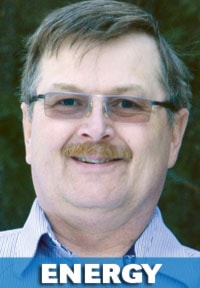As citizens of a modern, technologically-advanced society, we all are aware to some extent the ability of electricity to do useful work for us be it, light our way, keep us warm, protect our foodstuffs, provide us with entertainment or what have you.
Countries with an abundance of fossil fuels, primarily coal and natural gas, use it to generate the majority of their electrical energy.
However, with all the concerns and controversy that arises from consuming hydrocarbon fuels, interest is growing in alternate sources of power.
Photovoltaic (PV) solar panels are designed to convert the sun’s rays, the photons if you prefer, into electricity. Institutes dedicated to science and technology from around the world are working to increase the efficiency of photovoltaics allowing them to compete with conventional sources.
Intriguing developments in concentrating solar power, solar-driven Stirling engines, or photovoltaic/thermal hybrids are ceaseless. PV/thermal hybrids harvest both electrical energy and heat, the heat generated by the use of the concentrator lenses or reflectors is collected with exchangers.
The Royal Australian Institute of Technology has developed a hybrid system for the generation of both electricity and thermal energy using concentrating technologies, sun tracking capabilities and heat recovery equipment.
Known as the “Concentrated Universal Energy Solar System” or CUESS, it uses a trough-like design where the photovoltaics are placed in the bottom of the trough, an acrylic lens covers the opening, and exchangers behind the photovoltaics use coolant to carry away the captured heat.
The design allows a 3.5-square-metre array to provide as much electricity as a “conventional” array of 14 square metres, or roughly four times larger.
With 75 per cent less photovoltaic cells needed, the cost is reduced for electricity production.
And with the cooling system capturing the excessive temperature, the overall effect is to provide both electricity and thermal energy (hot water) at one- third the cost of a standard system.
One single sun-tracking array produces 400 watts of solar generated electricity and 1,700 watts of heat.
Sharp Corp., in conjunction with the University of Tokyo, set a new record in 2010 with their “triple junction” PV solar panel of some 42.1 per cent. Last year, with the addition of a Fresnel concentrator lens, they managed to increase the efficiency to 44.4 per cent.
Keeping in the race, a team of researchers at the University of Illinois, led by Prof. John Rogers, in collaboration with industry, have created a four-junction concentrator photovoltaic solar panel with an efficiency of 43.9 per cent.
The ultimate goal of the concentrating solar technology is to produce electricity at a cost that will rival conventional generation sources.
At efficiencies of 45 per cent, the PV arrays will match the cost of nuclear and thermal generated electricity.
However, with efficiencies of 50 per cent in sight, and new storage technologies rapidly evolving, photovoltaics are swiftly becoming cost effective.
Once concentrated solar power reaches that milestone, solar farms, in one form or another, will become common place around the world, particularly in resource poor countries.
Lorne Oja is an energy consultant, power engineer and a partner in a company that installs solar panels, wind turbines and energy control products in Central Alberta. He built his first off-grid home in 2003. His column appears every second Friday in the Advocate. Contact him at: lorne@solartechnical.ca.
